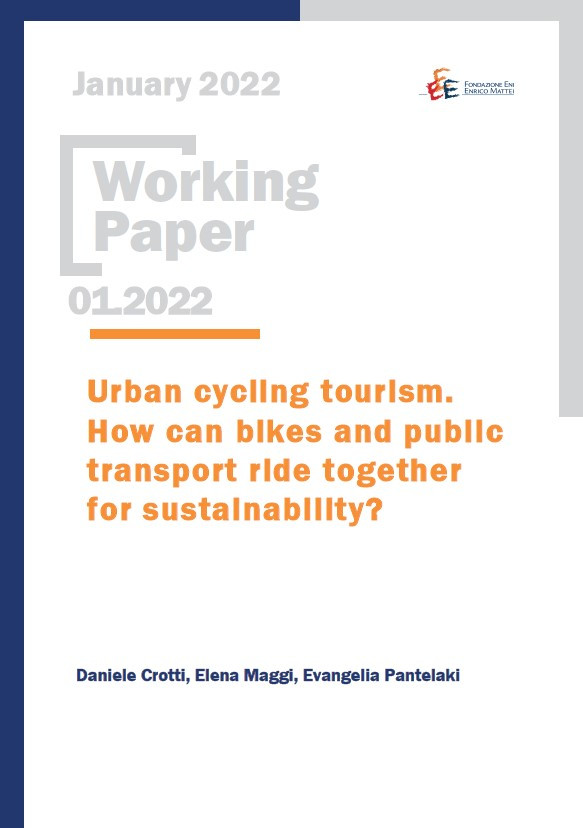Urban cycling tourism. How can bikes and public transport ride together for sustainability?

26.01.2022
Daniele Crotti, University of Insubria; Elena Maggi, University of Insubria; Evangelia Pantelaki, University of Insubria
C25, L92, O18, Q56, R41, Z32
Sustainable travels, Cycling holidays, Urban tourism, Public transportation, Bivariate probit
In the last years, sustainable travels have included bike tourists visiting cities to enjoy cultural and urban environments. Yet, when considering cycling tourists’ intra-destination trips by motorized vehicles, the extent of greenhouse gas (GHG) emissions could reduce the sustainability of those tourism experiences. In this paper we study the bike tourists’ choice of visiting urban places and of using greener transport means, such as public transportation. By using 858 observations from an on-line survey on bike tourism in 2020 in Italy, we develop a bivariate probit model, considering socio-demographics, bike-related factors, travel characteristics, and the evaluation of cycling and accommodation features at destination. The odds of visiting cities are positively affected by travel features, e.g., picking foreign countries, travel groups, the length of stays, the availability of commercial and bike recovery services, but also negatively by road traffic. Notably, using public transportation is more likely for longer daily trips by bike, for low-cost tourists lodging in B&Bs, and for those having a higher sensitivity to bike-related services. Since we statistically found a linkage between the two choices, from a destination management perspective, our results support the sustainability claim for policies affecting them simultaneously.
Suggested citation: D. Crotti, E. Maggi, E. Pantelaki (2022), ‘Urban cycling tourism. How can bikes and public transport ride together for sustainability? ‘, Nota di Lavoro 01.2022, Milano, Italy: Fondazione Eni Enrico Mattei
